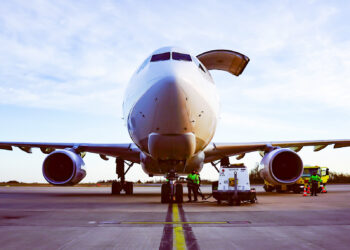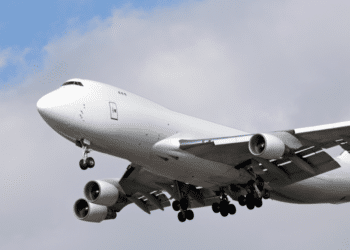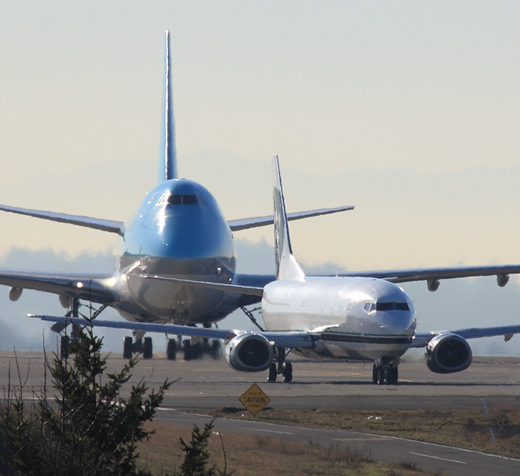After a slight gain in 2013, what lies ahead in 2014?
The International Air Transport Association yesterday released its full-year 2013 air freight market analysis, and, as we have been predicting for some time, the data shows a small increase in air freight traffic over 2012. Most of the growth took place in the second half of the year, and this, combined with the continued slow return to health of economies in the US and Europe, raises hope that the trend will continue in 2014. If there is any bad news in the report, it is that growth in December was not as robust as in November and October, but at 1.8% y-o-y it was still slightly above the 1.4% growth for the full year.

Looking at the first question, we note that International traffic grew only 1.2% in 2013, while domestic traffic grew 2.5%. We expect that much of the domestic growth was in the express sector – particularly in China where the explosion in online shopping is driving huge growth in express package delivery. This is good news for those in the business of converting narrowbody passenger aircraft to freighter configuration, for the regional carriers that fly in support of the express companies, and of course for the big express companies themselves; but offers only cold comfort to carriers in the general freight market.
As to the question of who carried the traffic, no big surprise there, as cargo continues to shift from the traditional big players in Asia and Europe to the relative newcomers in the Middle East. We will look at the results by region below, but first, regarding 2014, IATA said that while freight traffic growth would likely continue, “we can still expect that 2014 will be a challenging year. World trade continues to expand more rapidly than demand for air cargo. Trade itself is suffering from increasing protectionist measures by governments.” IATA also pointed out that “the relative good fortunes of passenger markets compared to cargo make it difficult for airline to match capacity and demand.” Which is another way of saying that rapidly increasing belly capacity robs carriers of pricing power in the cargo market, pushing down yield despite the growth in traffic. (According to IATA, passenger traffic increased 5.2% worldwide in 2013, and passenger capacity rose 4.8%.)
Asia-Pacific: Airlines based in the Asia-Pacific region have long carried the biggest share of global cargo traffic (about 40%), and they continue to do so. However, they face ever-increasing competition on the Asia-Europe trade lane (and the increasingly important Asia-Africa lane) from carriers based in the Middle East. In 2013, despite the increase in worldwide traffic, Asia-Pacific carriers saw their traffic decline by 0.3% in December and by 1.0% for the full year. And while China’s domestic express market is likely to see continued strong growth, IATA says that the overall outlook for the Asia-Pacific region is not particularly good, because: “Latest indicators show weakening in china’s manufacturing sector and new export orders, which does not bode well for regional trade and air freight demand.”
Middle East: As we have often reported, the rapid expansion of the long-haul fleets of the four big carriers from the Gulf Region – Emirates, Etihad, Qatar, and Saudia – combined with the strategic location of their hubs, has allowed them to take a rapidly increasing share of the traffic flowing on all the major trade lanes connecting Europe, Asia, Africa, and the CIS. This trend continued in 2013, with the region’s carriers reporting traffic up 13.0% for the month and 12.8% for the year.
Europe: Several years of political uncertainty and economic woes made the outlook for Europe at the beginning of 2013 uncertain, to say the least. However, the political situation stabilized, and as the European economy gradually improved throughout the year, cargo demand reported by the region’s airlines is improved along with it – up 2.9% y-o-y in December and 1.8% for the year. However, not all carriers are benefitting equally. Of the big three legacy carriers , only Lufthansa is reporting consistent y-o-y increases in cargo traffic in recent months – but these increases have been relatively small, and cargo traffic for the Lufthansa Group was up just 0.4% in 2013. Air France-KLM continued its long-term pattern of decline, with traffic down 4.6% for the year; and IAG has done even worse, with a 7.0% decline in 2013. However, while carriers like Air France-KLM and IAG may not be doing well, their poor performance has been made up for by gains at other carriers. Turkish Airlines, for example, is expanding its fleet and network in the same way as the big Middle Eastern carriers, and has put a strong emphasis on its cargo operations. Turkish reported its cargo volume up 20.1% in 2013, and shows no sign of slowing down.
North America: The huge amount of US domestic cargo carried by FedEx and UPS makes this region different from all others, but in 2013 North American carriers reported their cargo traffic down 0.4%. Of the three big legacy passenger carriers, only American reported a good year for cargo, with traffic up 4.3% over 2012 levels, but Delta and United reported declines of 1.4% and 10.0%, respectively.
Latin America: After several years of cargo traffic growth, LATAM, the region’s biggest carrier, reported a 0.5% decline in 2013, but IATA nonetheless reported total cargo traffic flown by Latin American carriers up 2.4% over 2012. Not a particularly large gain, but noteworthy in that it is the second-highest regional growth rate, behind only the Middle East.
Africa: After reporting solid growth in the first half of 2013, African carriers saw their cargo traffic decline through most of the second half. However, the year ended on a positive note with a 1.7% gain in December, and for the full year African carriers reported their cargo traffic up 1.0%. This relatively slow growth is not due to problems with the African economy, as trade volumes for the region continue to increase and local economies are seeing fast growth. Rather, African carriers are losing market share to carriers based in the Middle East, Europe, and Asia. The Gulf-based carriers in particular are offering vast amounts of belly space as they ramp up passenger service to African destinations, and much of the cargo moving into and out of Africa is now flying in 777-300ER and A330 passenger jets operated by carriers such as Emirates, Etihad, and Saudia.





